What Is the Best Salmon Internal Temp?
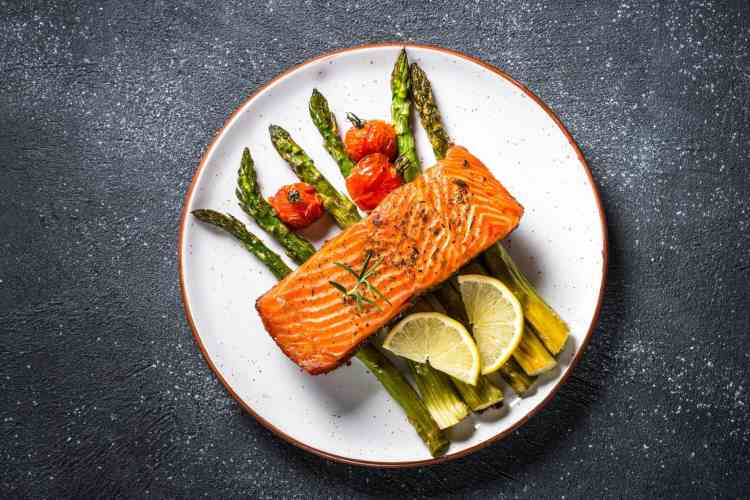
Are you wondering about the best salmon internal temp for baked, grilled or roasted salmon recipes? The best salmon is tender, flaky, moist and full of flavor. The worst salmon is dry, tough and a chore to eat. How could one of nature's most rich, delicious fish turn into such an unpalatable meal?
Overcooking is the culprit. It's notoriously easy to overshoot the right internal temp for salmon if you're not careful.
Don't let that put you off cooking salmon, though. The FDA recommends eating at least eight ounces of fish a week, and salmon is a great choice for your weekly fish intake. Low in saturated fat, salmon is an excellent source of omega-3 fatty acids, B vitamins, protein and potassium. It can help to lower cholesterol levels, maintain blood pressure and reduce the risk of heart disease. Plus, it’s delicious!
We’ve collected a guide to help you gain culinary confidence so that you hit the right internal temp for your salmon every time, no matter what cooking method you're using.
Jump to Section
- Minimum Salmon Internal Temp
- What Is the Best Salmon Internal Temp?
- Salmon Internal Temps by Doneness
- How Long to Cook Salmon in the Oven
- How to Know When Salmon Is Done
- Tips to Avoid Overcooking Salmon
- Our Favorite Salmon Recipes
Minimum Salmon Internal Temp
According to the FDA, salmon is considered fully cooked when the minimum internal temperature is 145° F. While this is the temperature that’s known to kill listeria almost instantly, this temperature often results in very dry salmon, the kind you pull out of the oven or off the grill and make a sad face about.
In truth, killing the bacteria that can live in raw meat is a little more complicated than most of us were taught. To sum it up, internal temperature alone isn’t the only factor that can determine whether listeria is killed. The perfect salmon internal temp is actually more of a combination of cooking temperature and the length of time the salmon is cooked. In other words, it can be cooked at a lower temperature for a longer amount of time.
This is why many people safely enjoy salmon cooked at a lower temperature even though 145° F is the suggested temperature.

What is the Best Salmon Internal Temp?
As with many things culinary-related, the best internal temp for salmon depends on preference. Some cooks reject any fish that hasn't been thoroughly cooked to the point of bone-dryness, while others like their salmon very moist and pink inside, as safely close to raw as they can get it. Still others fall somewhere in the middle of these two extremes.
The following are a few commonly suggested internal temps and what you can expect from salmon cooked to these internal temperatures:
- 145 degrees: The salmon can be dry, chewy and chalky.
- 135 degrees: The salmon will be silky, tender and safe to eat.
- 125 degrees: The salmon will be tender and moist. You’ll be able to cut it easily with a fork, and it won’t flake or fall apart as easily as at a higher temp.
If you prefer a firm but not dried-out slice of salmon, use 125 degrees to 135 degrees as your best salmon internal temp.
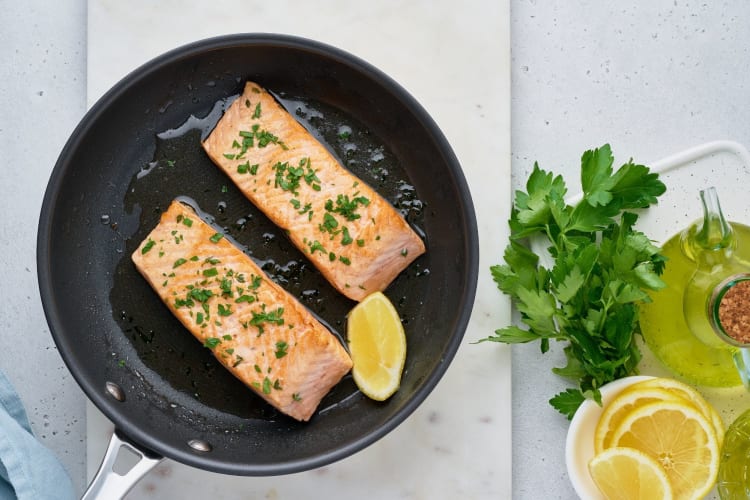
Salmon Internal Temps by Doneness
Doneness levels are another approach to finding the ideal internal temp of salmon. Depending on whether you like your salmon rare, medium or well-done, you have options when it comes to internal temperature.
- Rare: Less than 120° F. Translucent flesh and soft to the touch. Not recommended.
- Medium-Rare: 115 to 120° F. Soft and moist, only just beginning to turn opaque.
- Medium: 120 to 125° F. Opaque throughout and slightly firm with a pinkish center.
- Medium-Well: 125 to 140° F. Light pink center and firmer flesh.
- Well-Done: 140 to 150° F. Firm flesh, fully cooked throughout, no pinkness.
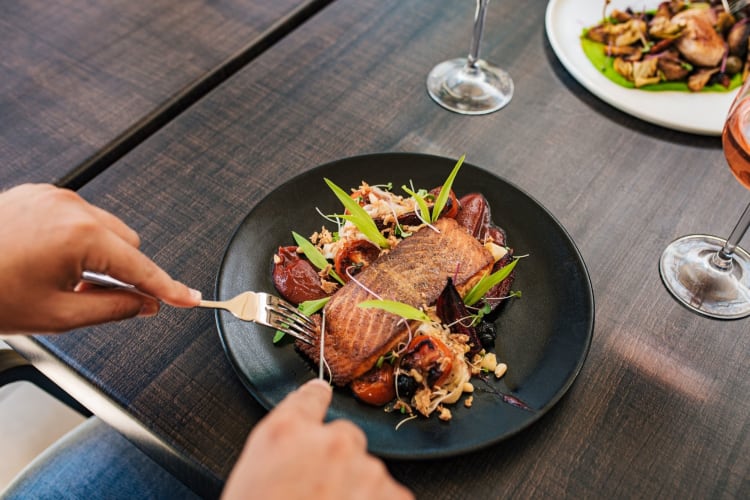
How Long to Cook Salmon in the Oven
Salmon should be cooked according to the thickness of the slice:
- 350° F: About 12 to 15 minutes for each inch of thickness
- 375° F: About 10 to 12 minutes per inch of thickness
- 400° F: About 8 to 10 minutes per inch of thickness
- 425° F: 6 to 8 minutes per inch of thickness
- 450° F: 5 to 7 minutes per inch of thickness
Remove the salmon when it reaches your preferred temperature. At this point, let it sit for a while. This allows the juices to be distributed throughout the meat and the cooking process to continue slightly. This will result in a tender, juicy and flavor-filled salmon fillet.
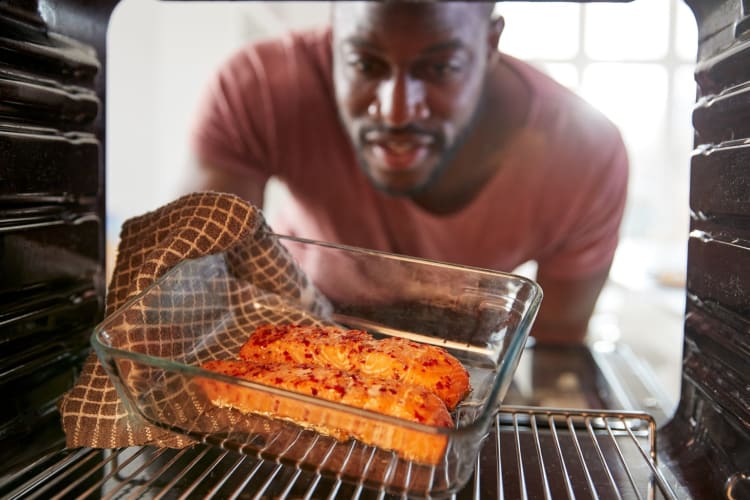
How to Know When Salmon Is Done
Meat Thermometer Method
The best way to check the internal temperature of salmon is with a meat thermometer. Simply insert the thermometer into the thickest part of the salmon. The Harold Import Co. Large Face Meat Thermometer offers features such as a large face, Fahrenheit and Celsius temperature readings and ideal ranges for beef, veal, lamb and poultry. It's also a great kitchen tool to use to check a chicken thigh's internal temp, which, like the internal temp of salmon, has a little more flexibility than you might have been taught.
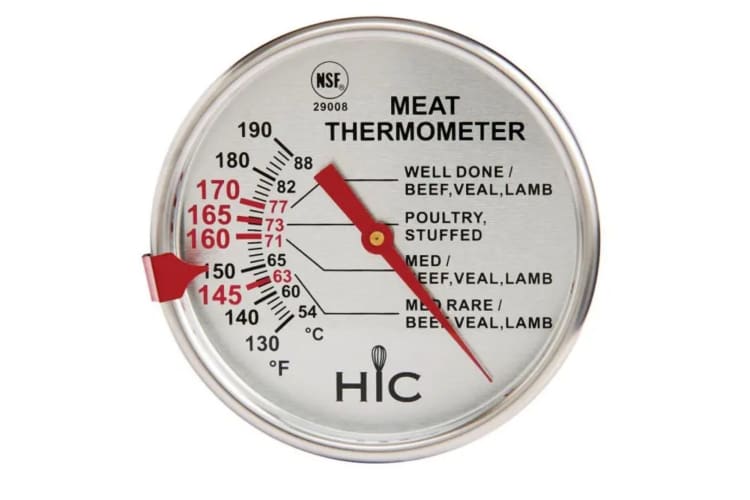
Check Texture and Appearance
If you don’t have a meat thermometer to check the internal temp of salmon, another way to see if salmon is done is by pressing down on it with your finger or a fork. If the meat flakes or separates easily when pressed, it’s done. When looking inside the salmon, the center should not appear translucent.
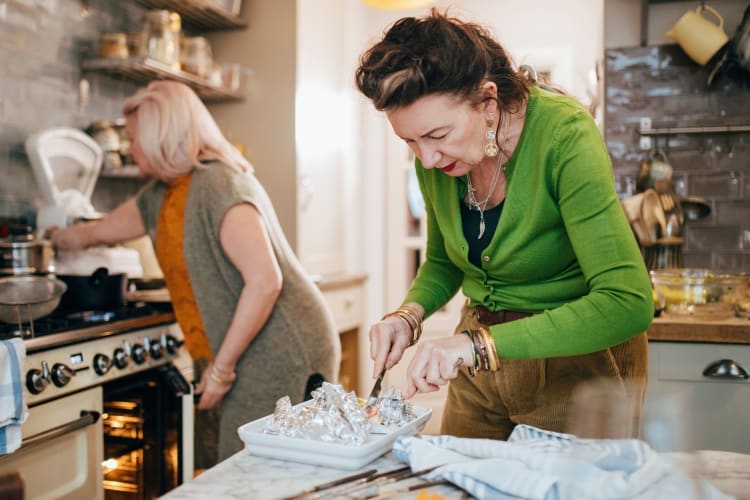
Tips to Avoid Overcooking Salmon
When it comes to reaching the perfect internal salmon temp each time, there's no better way to achieve confident expertise than by going in for a cooking class. Whether you're looking for cooking classes in NYC or cooking classes in Vancouver, there's sure to be a cooking class near you led by a world-class chef ready to show you the secrets to mouthwatering salmon dishes.
Until then, here are some other tips to avoid overcooking:
- Use a timer to get the best internal temp for salmon.
- Use a food thermometer inserted into the thickest part of the salmon.
- Watch the color. When fully cooked, salmon changes from translucent to an opaque white color.
- Cook at a lower temperature for a longer amount of time.
- Cook inside foil or parchment paper (this insulates the salmon).
- Use a sauce or marinade to prevent drying out.
- Use a thicker or fattier fillet. This makes it harder to overcook than a thinner fillet.
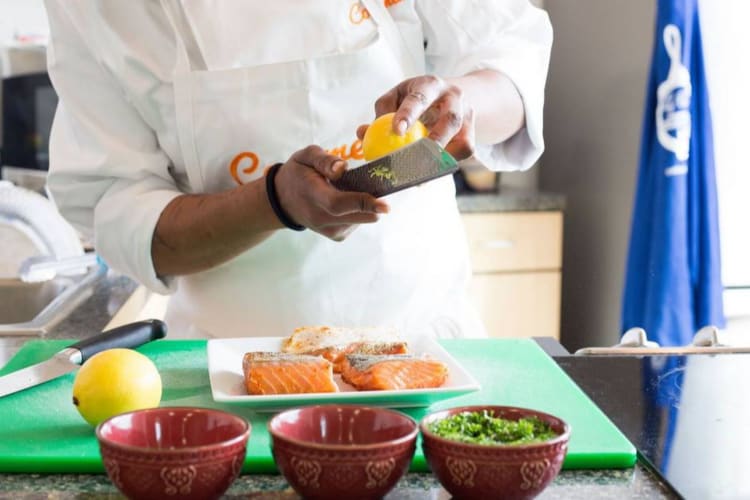
Our Favorite Salmon Recipes
Don’t avoid preparing your favorite recipes just because you’re worried about cooking to the correct salmon internal temp. With a little practice and a touch of patience, you’ll be creating salmon recipes like a pro in no time.
For even more ways to explore your favorite foods, check out other experiences happening on Cozymeal.



FOOD FOR THOUGHT?
Join the conversation.